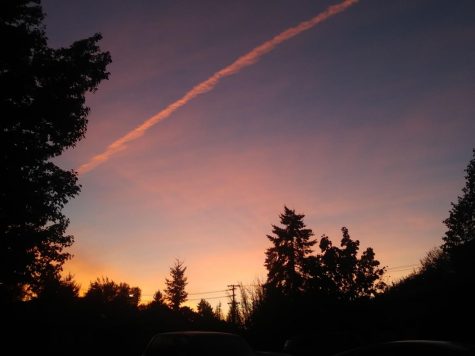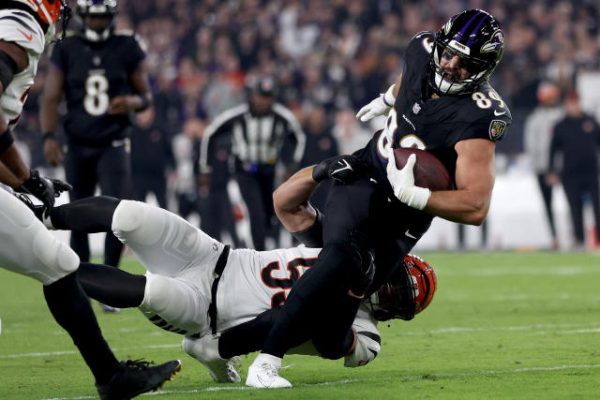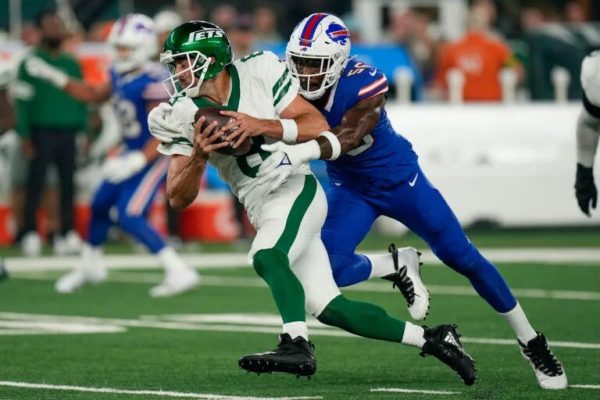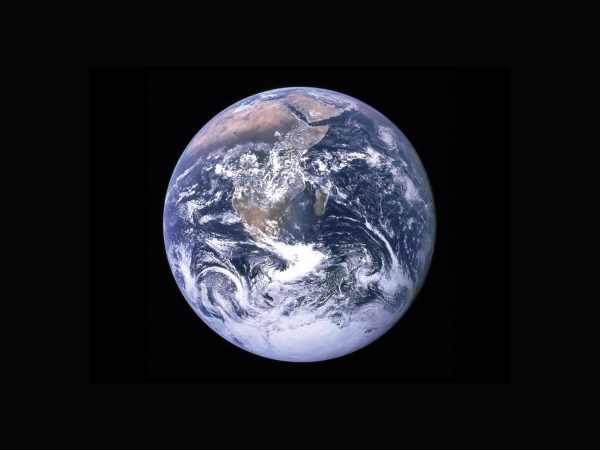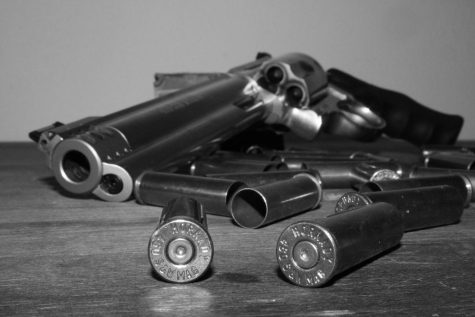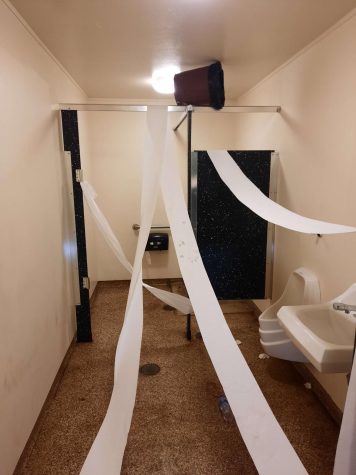Editorial #7 – Policing in America
Hello Gauchos!
Oh boy, I feel like I’m walking into a bit of a hot zone this time around. Given recent events, and the tragic death of a 29-year-old black person, I thought it would only make sense to address it in pursuit of absolute truth and transparency as a journalistic entity.
On Jan. 7, 2023, five Memphis police officers pulled over Tyre Nichols under suspicion of reckless driving. Immediately, they initiated a felony stop on the vehicle. A felony stop is not a traffic stop; rather than a police officer casually walking up to your window and talking to you about a particular problem, it is assumed that you are armed and dangerous. The police usually involve multiple units and will approach your vehicle with weapons drawn and methodically order you out of the car. This approach is intended to minimize damage and prevent the subject from harming themselves, the police, or others in the area.
However, based on the officers’ sole suspicion of reckless driving, this should not have warranted a felony stop procedure. Reckless driving is not a felony unless someone is injured during the course of said reckless driving, which wasn’t the case in this situation. Additionally, the Memphis Police Department later pointed out that they did not believe that the officers had probable cause to stop the vehicle. Probable cause is essentially the evidence and facts required in order for police officers to conclude that a certain person committed an offense.
The five officers on scene then proceeded to pull Nichols from his vehicle and drag him to ground, while pepper spraying him in the face and tasing him. At the same time, the officers were shouting commands, expletives, as well as threats at Nichols. It was later revealed in the body camera footage that one officer remarked “I hope they stomp his ass.”
Nichols was able to successfully break free momentarily, but the officers quickly caught up to him in a nearby residential neighborhood about 800 meters away. There, he was restrained and then savagely beaten for almost 3 minutes straight.
Reports indicate that Nichols was pushed to the ground, kicked twice in the face, and struck in the back with a baton in various positions. When he was brought to a standing position, some of the officers took turns punching him in the face while he made no attempts to fight back. By the end of the beating, Nichols was limp and complaining of shortness of breath.
Medics arrived ten minutes after the beating had occurred, but they did not immediately intervene. Instead, they waited a whopping 16 minutes before beginning to render aid.
Nichols was rushed to the hospital in an ambulance just after 9 p.m, where he regrettably died of massive external and internal injuries on Jan. 10, 2023. The five officers involved were fired on Jan. 20 and then arrested and charged with murder, kidnapping, assault and misconduct 6 days later. Two additional firefighters who had responded to the scene, but had refused to render aid to Nichols were also fired.
This tragic instance of police brutality in America reminded me of a similar incident that occurred well before my time which I had only just recently watched a horrifying yet enriching documentary on.
The documentary was titled “LA 92” and it chronicled the horror and destruction of the Los Angeles Rodney King Riots of 1992 in an intriguing format; rather than showing interviews of people with background narration and showing some actual photographs here and there, the documentary had no narration whatsoever — only small context-based screens of text carefully placed between nothing but raw amateur video and news reels. The documentary let the videos speak for themselves, allowing watchers to draw their own conclusions about what had happened.
The Rodney King Riots are still considered to be one of the worst periods of civil unrest in U.S. history. Looters rummaged through the store fronts to the dismay of shop owners and entrepreneurs. Homes and businesses were set ablaze all across the city to the such an extent that the fire department could not keep up, forcing them to let some buildings just continue to burn. On top of that, some firefighters were concerned for their own safety, as there were reports of fire units that had been shot at and attacked simply for trying to do their job. And all at the same time, dead bodies lay in the streets of Los Angeles, maimed in the middle of roads, slumped over in the driver’s seats of cars, and buried beneath the rubble of decimated buildings.
All of that unrest occurred because of the incident with Rodney King who, similarly to Tyre Nichols, was stopped by police and beaten savagely by them shortly thereafter. A man happened to catch the interaction on his videotape camcorder (yes, those used to be a thing), which greatly helped King’s case. However, even with such definitive video evidence and the sheer caliber of the wounds that King received, a jury found that the four officers who had committed the beating were not guilty. Uproar ensued immediately and the rioting began.
In the case of Tyre Nichols, I am relatively confident that the officers who committed such heinous acts will be convicted of their crimes as filed. We saw from the 2020 George Floyd protests that the officers who very clearly abused their power as members of law enforcement were charged and convicted of those crimes. They were found guilty, much unlike the case of Rodney King which was quite the opposite. Thus, I am adamant that these officers will receive punishment for their actions.
Because if the Rodney King riots taught us anything, it is that injustice on the part of the actual justice system that is supposed to be delivering justice will only lead to catastrophe and further injustice. And in the midst of such infighting, many innocents will be injured, some will perish and a great deal of property and livelihood will be destroyed.
Now, these incidents oftentimes have a seemingly mythical tendency to bring a large majority of anti-police activists out of the woodwork and onto the public forum. These people call for police reorganization and reform as a result of these incidents, which absolutely makes sense given the circumstances.
However, despite these reckless beatings, despite these ruthless killings, and despite the malfeasance of a decent amount of police officers across the country, I want to heavily stress that the behavior of the “bad apples,” so to speak, is not representative of the entirety of the police force of the United States.
There is no doubt in my mind that there are corrupt, blood thirsty lunatics out there in a blue uniform. In a perfect society, I would hope there wouldn’t be any, but such is life in a societal structure where factions emerge, man is supreme, and ideologies differ. However, despite those corruptions, a majority of police officers in the United States are genuinely good people. Time and time again, they rescue people from burning buildings, car crashes, dangerous active shooter situations and several other circumstances that no ordinary citizen wants to be caught smack dab in the middle of.
For instance, check out the YouTube channel PoliceActivity. They are probably one of the best police body camera footage databases in the United States right now, and what they essentially do is simply share public police body camera footage of serious incidents released by various different police departments all across the U.S.
As violent as these videos can be, especially in circumstances where there are multiple heavily armed subjects firing at police, these videos promote a great deal of confidence in the police forces of America. Not only does it demonstrate that there are police officers who actually care about doing their job properly, but it also humanizes them and puts their emotions and feelings into the public eye. Take a look at the body camera footage of the 2020 Sparks, Nev. Micah Lee shooting: the officer who shot Lee clearly did not want to shoot him. He broke down in tears just 30 seconds after it had occurred. But he had to: Lee was armed with a gun, and fully intended to shoot and kill others.
Therefore, it is my firm belief that not enough people see these videos, particularly those who openly and confidently declare that “All cops are bad.” This statement is simply not true. Rather, it should be amended to “Some cops are bad.” That would be a far more agreeable statement.
Police brutality is never an easy issue to discuss. It’s multifaceted in that it is an issue that in and of itself contains other issues, making it complex and difficult to handle.
No solution will ever satisfy all. And no problem will ever be definitively resolved. However, even though there are bad apples in the world, they are massively and hugely outweighed by good apples of the world, and therein lies the reason in which we as a society must remain optimistic of our police force. It needs work, yes. But remember to put yourself in the shoes of the countless police officers, sheriff’s deputies, state troopers and federal officers that consistently and bravely put their lives on the line to protect you, the people, from the evils that society has conjured from within itself.
Remember, Gauchos: we are all in this together. We may never be able to make things perfect, which is an absolute shame, but we can certainly make it better. We can make it as best as we can.
If you ever have any questions, comments or concerns about a particular article, or you have a suggestion for one, please don’t hesitate to leave us a comment, write us a letter or send us an email.
Seize the Day,

Owen Davis
Editor-in-Chief, 2022-2023



